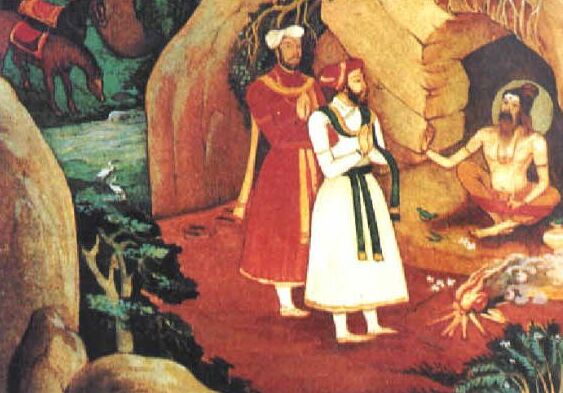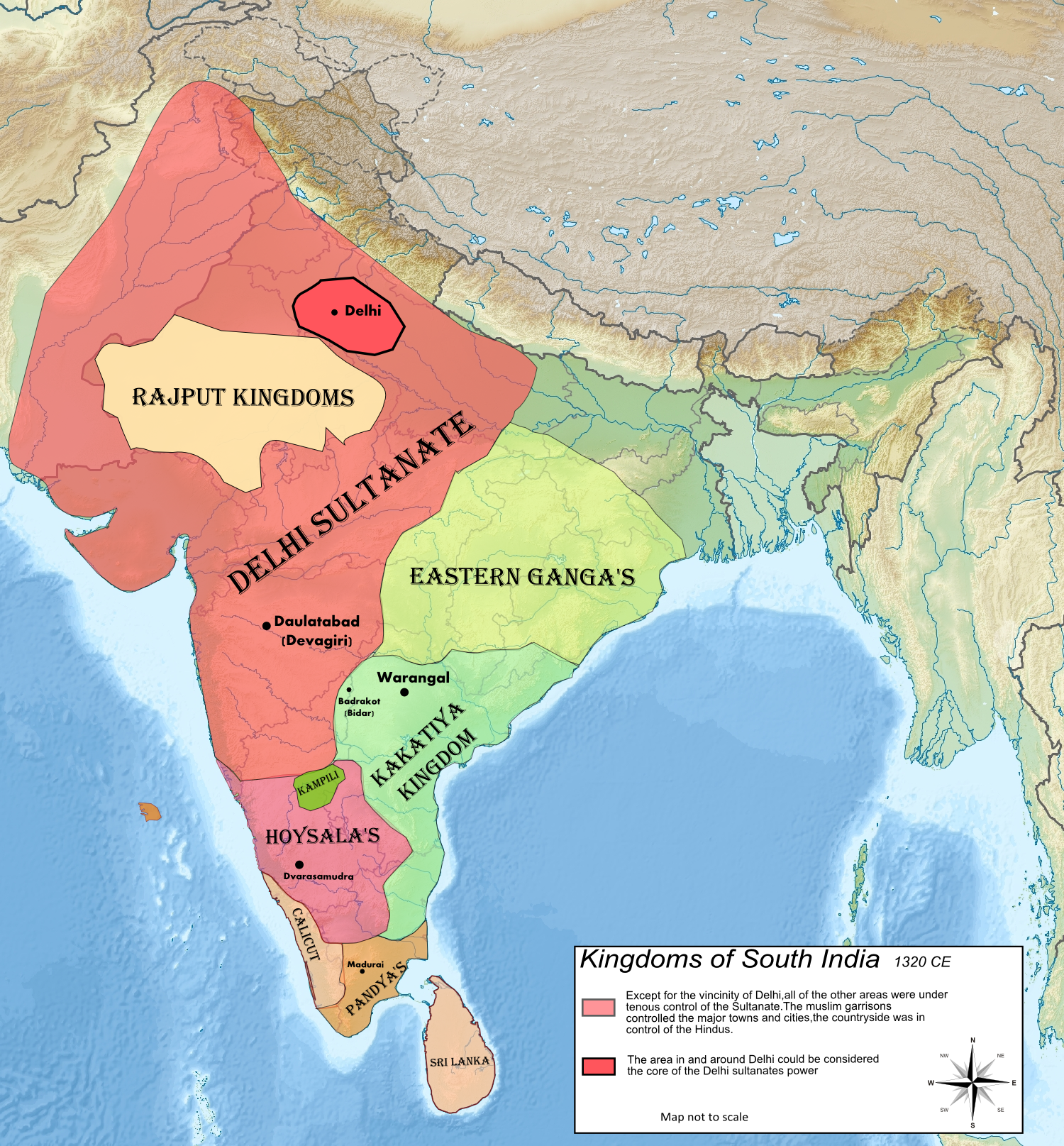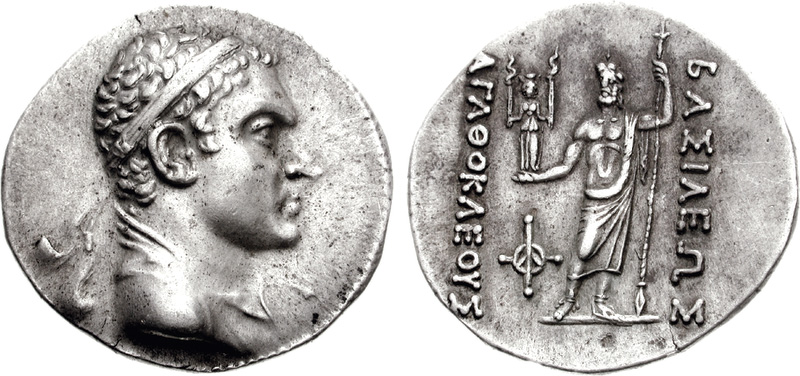|
Bhavana Sangama
Bhavana Sangama or simply Sangama was the father of the brothers Harihara I and Bukka Raya I, the founders of the Vijayanagara Empire. Biography He was the chieftain of a cowherd pastoralist community, which claimed descent from the illustrious Yadava race, and was married to Maravve Nayakiti, the daughter of the Kampili king Kampili Deva Raya and the elder sister of prince Kumara Rama. He had 5 children, Harihara, Bukka, Kampa I, Marappa and Muddappa, who founded the Vijayanagara Empire (mainly by Harihara and Bukka Bukka Raya I (reigned 1356–1377 CE) was an emperor of the Vijayanagara Empire from the Sangama Dynasty.Phrof A V Narasimha MurthyRare Royal Brothers: Hakka and Bukka He was a son of Bhavana Sangama(Unofficial). Background The early life of Bu ...) Bibliography * Dr. Suryanath U. Kamat, Concise history of Karnataka, MCC, Bangalore, 2001 (Reprinted 2002) * Chopra, P.N. T.K. Ravindran and N. Subrahmaniam.History of South India. S. Chand, 2003. References {{Re ... [...More Info...] [...Related Items...] OR: [Wikipedia] [Google] [Baidu] |
Harihara I
Harihara I, also called Hakka and Vira Harihara I, was the founder of the Vijayanagara Empire, which he ruled from 1336 to 1356 CE. He and his successors formed the Sangama dynasty, the first of four dynasties to rule the empire. He was the eldest son of Bhavana Sangama(unofficial). The early life of Hakka and his brother Bukka is relatively unknown and most accounts are based on various speculative theories. Ballappa Dandanayaka, a nephew of the Hoysala ruler Veera Ballala III, had married a daughter of Harihara. This shows that Harihara was associated with the Hoysala Court. Immediately after coming to power, he built a fort at Barkuru, on the west coast of present-day Karnataka. It appears from inscriptions that he was administering the northern parts of present-day Karnataka from his seat at Gooty (Gutti), Ananthpur district in 1339. He initially controlled the northern portions of the Hoysala Empire before taking full control over its entire range after the death of Hoysala ... [...More Info...] [...Related Items...] OR: [Wikipedia] [Google] [Baidu] |
Bukka Raya I
Bukka Raya I (reigned 1356–1377 CE) was an emperor of the Vijayanagara Empire from the Sangama Dynasty.Phrof A V Narasimha MurthyRare Royal Brothers: Hakka and Bukka He was a son of Bhavana Sangama(Unofficial). Background The early life of Bukka as well as his brother Hakka (also known as Harihara I) are relatively unknown and most accounts of their early life are based on various theories (see the Vijayanagara Empire article for more extended descriptions of these). The Father Heras theory states that Sangama brothers had a great devotion to the Karnataka deities like Virupaksha and Keshava. They signed only in Kannada letters like "Sri Virupaksha" in Sanskrit, Telugu, and Tamil records. Dr. Desai quotes that Ferishta called the emperors as "Roise of Carnatic". Carnatic means "Karnataka" hence shows their origin from Karnataka.http://www.bellary.nic.in/history.htm The second theory states that Bukka and Hakka were commanders in the army of the Kakatiya King of Warangal. Afte ... [...More Info...] [...Related Items...] OR: [Wikipedia] [Google] [Baidu] |
Sangama Dynasty
The Sangama dynasty was a dynasty of the Vijayanagara Empire founded in the 14th century by two brothers: Harihara I (also called ''Vira Harihara'' or ''Hakka Raya'') and Bukka Raya I. They were the sons of Bhavana Sangama, members of a pastoralist cowherd community that claimed Yadava lineage. Foundation and early history Harihara I and Bukka I, the founders of the empire, were Kannadigas and commanders in the army of the Hoysala Empire stationed in the Tungabhadra region to ward off Muslim invasions from Northern India and another theory state that the Sangama dynasty was founded by Harihara I and Bukka. Their father had been taken prisoner in 1327 by Muhammad bin Tughluq. They founded Vijayanagara in 1336. Successors Bukka's successor, Harihara II, continued Bukka's campaign through southern India and managed to take control of coastal Andhra between Nellore and Kalinga and conquer the Addanki and Srisailam areas as well as most of the territory between the peninsula to the ... [...More Info...] [...Related Items...] OR: [Wikipedia] [Google] [Baidu] |
Vijayanagara Empire
The Vijayanagara Empire, also called the Karnata Kingdom, was a Hinduism, Hindu empire based in the region of South India, which consisted the modern states of Karnataka, Andhra Pradesh, Tamil Nadu, Kerala, Goa and some parts of Telangana and Maharashtra. It was established in 1336 by the brothers Harihara I and Bukka Raya I of the Sangama dynasty, members of a pastoralist Herder, cowherd community that claimed Yadava lineage. The empire rose to prominence as a culmination of attempts by the southern powers to ward off Islamic invasions of India, Perso-Turkic Islamic invasions by the end of the 13th century. At its peak, it subjugated almost all of South India's ruling families and pushed the sultans of the Deccan beyond the Tungabhadra River, Tungabhadra-Krishna River, Krishna river doab region, in addition to annexing modern day Odisha (ancient Kalinga (historical region), Kalinga) from the Gajapati Empire, Gajapati Kingdom thus becoming a notable power. It lasted until 1646 ... [...More Info...] [...Related Items...] OR: [Wikipedia] [Google] [Baidu] |
Yadava
The Yadava (literally, descended from Yadu) were an ancient Indian people who believed to be descended from Yadu, a legendary king of Chandravamsha lineage. The community was formed of various clans, being the Abhira, Andhaka, Vrishni, and Satvatas, who all worshipped Krishna. They are listed in ancient Indian literature as the segments of the lineage of Yadu (''Yaduvamsha'').Thapar, Romila (1978, reprint 1996). ''Ancient Indian Social History: Some Interpretations'', New Delhi: Orient Longman, , p.223 At various times there have been a number of communities and royal dynasties of the Indian subcontinent that have claimed descent from the ancient Yadava clans and legendary Yadava personalities, thus describing themselves as the Yadavas. The sociologist M. S. A. Rao and historians such as P. M. Chandorkar and T. Padmaja say that epigraphical and historical evidence exists for equating the Ahirs with the ancient Yadava clan. The Yadavas of the Mahabharata period were known to be ... [...More Info...] [...Related Items...] OR: [Wikipedia] [Google] [Baidu] |
Kampili Kingdom
The Kampili kingdom was a short-lived Hindu kingdom of early 14th-century in the Deccan region. The kingdom existed near Ballari and Tungabhadra river in northeastern parts of the present-day Karnataka state, India. It ended after a defeat by the armies of Delhi Sultanate, and a ''jauhar'' (ritual mass suicide) in 1327/28 CE when it faced a certain defeat. The Kampili kingdom in some historical accounts is called the Basnaga kingdom, and as what inspired and ultimately led to the Hindu Vijayanagara Empire. History The founder of the kingdom was a Hoysala commander, Singeya Nayaka-III (1280–1300 AD), who declared independence after the Muslim forces of the Delhi Sultanate defeated and captured the territories of the Seuna Yadavas of Devagiri in 1294 CE. Nayaka-III was succeeded by his son Kampilideva in 1300, who remained in dispute with the territorial claims of Delhi Sultanate. The Kampili kingdom finally fell to the invasion in 1327/28 CE from the north by the forces of Muha ... [...More Info...] [...Related Items...] OR: [Wikipedia] [Google] [Baidu] |
Kampilideva
Kampilideva was the second and last king of the short-lived Kampili kingdom. His son, prince Kumara Rama helped him wage endless wars against the Kakatiya dynasty of Warangal, the Hoysala Empire, and the sultan of Delhi, Muhammad bin Tughlaq. Kampilideva and his son Kumara Rama died battling the huge forces of Muhammad bin Tughlaq. Reign Kampilideva succeeded his father, Singeya Nayaka III (1280–1300 AD) in 1300 AD. He remained in dispute with the territorial claims of Delhi Sultanate. His son, prince Kumara Rama, who was an able military leader, helped him wage endless wars against the Kakatiya dynasty of Warangal, the Hoysala Empire, and the sultan of Delhi, Muhammad bin Tughlaq. He is seen as a successful and courageous ruler, who resisted the mighty Delhi Sultanate. Death In 1327/1328 CE, the huge armies of Muhammad bin Tughlaq from Northern India attacked the kingdom of Kampilideva, i.e. the Kampili kingdom, which was the one of the last independent Hindu kingdoms in ... [...More Info...] [...Related Items...] OR: [Wikipedia] [Google] [Baidu] |
Kumara Rama
{{Use Indian English, date=December 2018 Kumara Rama (1290 - 1320) is a revered as an historical figure in the history of Karnataka state and the inspiration for the establishment of the Vijayanagar Empire. Kumara Rama was the son of the chief Kampli Raya of Kampli or Kampli Kote (Kampli Fort). Kampli is a town in the Bellary district of Karnataka and it's a head quarter of Kampli Taluk. Harihara I and Bukka Raya I, the founders of great Vijayanagara Empire were the nephews of prince Kumara Rama. The mother of these two brothers was Maravve Nayakiti the elder sister of prince Kumara Rama. As a Prince Kumara Rama (1290-1320), was an ideal prince and an embodiment of good virtues, who stood by his father in waging relentless wars against the Kakatiya dynasty of Warangal, Hoysala, and Muhammad bin Tughlaq of northern India. Kumara Rama died at a very young age battling the Muslim armies of Tughlaq and was an inspiration for the foundation of the Vijayanagar empire. Worship in hi ... [...More Info...] [...Related Items...] OR: [Wikipedia] [Google] [Baidu] |
Yadava Kingdoms
The Yadava (literally, descended from Yadu) were an ancient Indian people who believed to be descended from Yadu (legendary king), Yadu, a legendary king of Chandravamsha lineage. The community was formed of various clans, being the Abhira, Andhaka, Vrishni, and Satvatas, who all worshipped Krishna. They are listed in ancient Indian literature as the segments of the lineage of Yadu (''Yaduvamsha'').Thapar, Romila (1978, reprint 1996). ''Ancient Indian Social History: Some Interpretations'', New Delhi: Orient Longman, , p.223 At various times there have been a number of communities and royal dynasties of the Indian subcontinent that have claimed descent from the ancient Yadava clans and legendary Yadava personalities, thus describing themselves as the Yadavas. The sociologist M. S. A. Rao and historians such as P. M. Chandorkar and T. Padmaja say that epigraphical and historical evidence exists for equating the Ahirs with the ancient Yadava clan. The Yadavas of the Mahabharata per ... [...More Info...] [...Related Items...] OR: [Wikipedia] [Google] [Baidu] |

.jpg)


